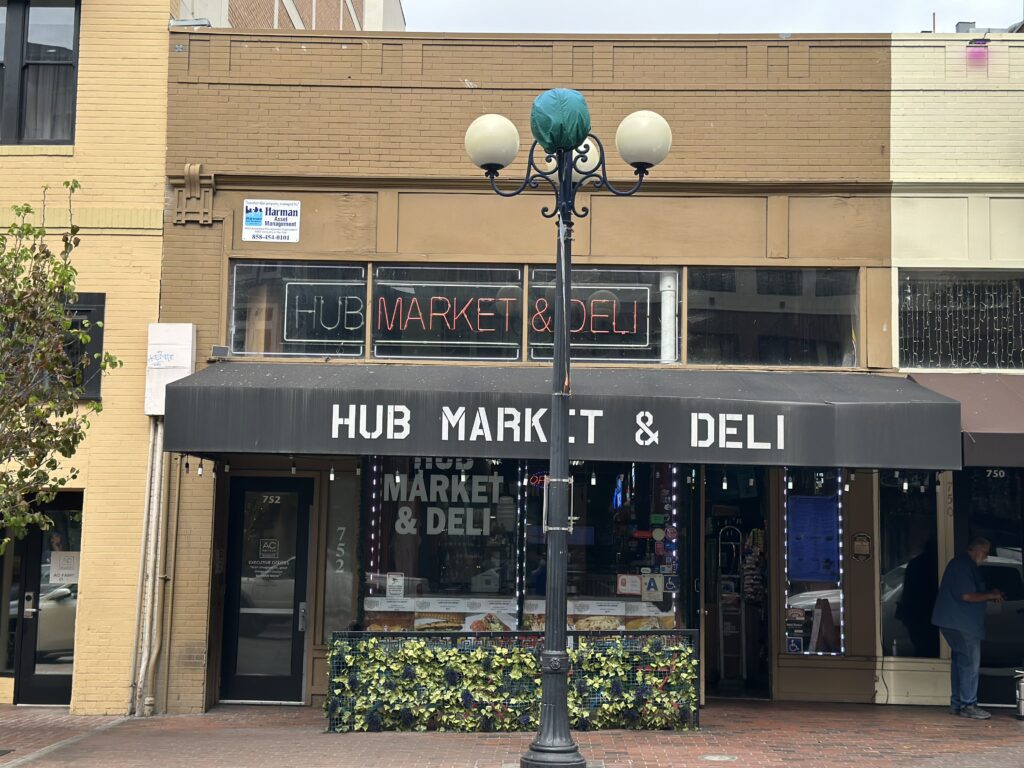Landmarks, Uncategorized
You Can’t Win ‘Em All!
Snyder Building
1923
748 Sixth Avenue
Architectural Style: Early 20th Century Commercial
Architect: Unknown
Some buildings are best known for their distinct architectural style, while others garner the limelight because of the personages attached to their origin or construction. Such is the rather modest structure still standing on Sixth Avenue.
As with any and probably all downtown lots and structures, the site of Snyder building passed from Alonzo E. Horton to General William Starke Rosecrans on September 1867, for the sum of $300. Horton was later to sell an even bigger lot for $300 to George D. Backesto. Local San Diegans are familiar with the name Rosecrans as it is perpetuated throughout the area through Fort Rosecrans , Rosecrans Street and Rosecrans National Cemetery. However, he was not only a decorated Civil War general, but also an inventor, a coal company executive, a diplomat, a politician and the Union Army leader responsible for victory, with minimal casualties, in the Battle of Chattanooga He even became Ambassador to Mexico.
He also spent a fortune in San Diego developing mineral resources and in the incorporation of railroads. General Rosecrans served as President of the California South Coast Railroad Company, and was one of the incorporators of the Texas Pacific Railroad. He did not maintain control of Lot K, as the parcel became known, and sold it back to Horton, along with several other lots. This multi-lot deal cost Horton $2,000.
The next lucky person to become the owner of Lot K was none other than George Marston, another household name in early San Diego. Marston, the son of a judge, was becoming known as quite the capitalist in the 1870s. George quickly passed the lot on to another capitalist, who had just arrived from Ohio, Charles Baldwin. Baldwin quickly sold the property to Samuel Pelton Jones, a land investor and a member of the Board of City Trustees. Shortly after the acquisition, the popular little lot became the possession of John Snyder. Snyder had moved to San Diego in 1875, and was married to Jennie Whitely.
Mr. Snyder was active in politics and real estate. When the position of Trustee on the City Board became available, Snyder defeated Alonzo Horton for the spot. Thus, he became the only person to ever defeat Father Horton. By 1885, Snyder had become President of the Board of City Trustees.
In July of 1885, John Snyder became one of the founding directors of the San Diego Building and Loan Association. This new organization offered opportunities for investors, and the San Diego Union further endorsed it by stating that, “Properly managed , the association will be of lasting benefit to San Diego.” All of the directors occupied leadership positions in the community.
Busy with all his civic duties, Snyder sold Lot K to his father-in-law, A. Whitely. Under Whitely, the first business on the property opened in 1889 – Luscomb’s Fuel and Feed. The first structures were two, one -story frame buildings. Situated on the north side of the lot was a hay building with a stable , and a feed building was located on the south side. By 1907 Mr. Whitely had sold the lot to his daughter, the wife of John Snyder, so once again the property belonged to the Snyders. The business operated by Luscomb and his new partner, George Watson, continued until 1919, when their lease with the Snyders expired. They did continue to do business there until 1923 under a new lease.
In 1923, Snyder decided to build a new structure on his property to be used as a furniture store. The rectangular, stucco over brick structure, had minimal ornamentation and a flat roof. A centered recessed entrance was flanked by large plate glass windows. The only ornamentation was a painted moulding across the facade.
Charles and Alice Lowenstein managed the first business to be housed in the new structure – a furniture store. They were followed in 1926 by the National Furniture Company.
At this point, Snyder lost control of the property due to an issue with the probate of the recently deceased Jennie’s will. He did regain the property after two months, and then leased the property to Alex Davidson, who ran a second-hand furniture business until 1930.
The 1956-1964 Sanborn Fire map indicates a furniture business, but no name is listed. Possibly, it might be Action Office Furniture. Ultimately, Ace Uniforms and Accessories moved in. It is now the home of Hub Market and Deli. The building looks very much the same as when it was built. No frills, but still serving the community.
Sandee is the Historian/Lead Tour Guide for the Gaslamp Quarter Historical Foundation.
She can be reached at [email protected].

